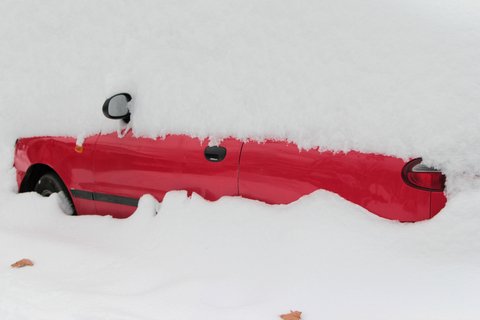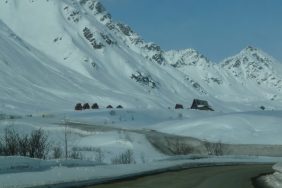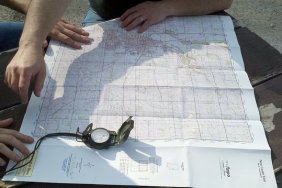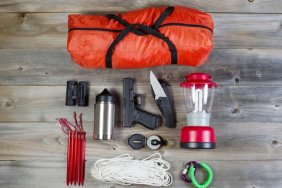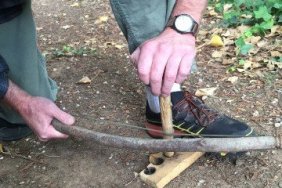This has been a big year for snowfall in the Sierras and also a big year for avalanches. Recently the avalanche danger was so bad that they closed Alpine Meadows ski area due to numerous slides in the Taho area.
One slide damaged a house and buried a car (with someone in it) in a subdivision. The occupant in the car was lucky because of a quick response from North Tahoe Fire and Ski Patrol. The rescuers were able to free the driver fairly easily and there were no injuries.
But what about the scenario where you’re driving over a mountain pass and you get swept off the highway? What would you do if help was nowhere around and you are trapped in a dark car, not knowing where you are and how deep the snow is outside? Believe it or not, it happens!
Usually, roads are cut into canyons and are in the “runout zones” of avalanche paths. Basically, by the time you get buried, you are in the debris field and it’s not fluffy powder around you. It’s actually more like cement. In the movies, people just dig to the surface but it’s not that easy.
By all means, turn off the vehicle right away if it’s still running. Carbon monoxide will kill you quicker than anything else so do not turn your engine on to run the heat etc. Snow is an excellent insulator and you will probably stay warm enough to survive. Remember that in the order of survival, shelter comes first. Even though you’re trapped, you do have shelter.
The next thing you want to do is access the situation and treat the wounded. Then, see if you can put out a call on your cell phone. If you’re successful, rescue will be on the way.
Remember that you have a horn. Blowing your horn every 15 minutes or so will signal your position should there be help around. Make sure you turn the ignition back off to conserve your battery. Avoid unnecessary use of interior lights and the radio. Use a flashlight if you have one.
Considering that most people don’t carry a shovel in the car, digging out is usually not an option unless you know how deep you are. Most vehicles have jacks inside. The handles for these jacks usually extend out to make jacking easy. If you are able to partially open a window, try sticking the jack handle (or a ski pole etc.) out to see if you can reach the surface. If so, you have created an airway and you know that you can probably dig out. This is a situation that has a million variables and if it’s night, you won’t be able to see light through your hole. Use common sense.
Another thing to consider if you are able to dig yourself out is how you might be able to survive if you’re in a remote area. Once you get out, you are vulnerable to the elements and to more avalanches. Can you find shelter or are you better off in your vehicle? Are there houses nearby?
Can you make a fire to stay warm? Once again, there are different scenarios and sometimes your vehicle is the best place to stay. Conserve your energy and try to remain calm. Unnecessary work will make you sweat and you could be hypothermic very quickly. Try to keep warm.
Anytime you’re traveling in winter conditions, make sure you have extra food and water, some warm blankets, a shovel, some way to make fire, a flashlight and a charged cell phone.
As the Boy Scouts would say, “Be Prepared.”
© Triocean | Dreamstime.com – Car Covered in Snow
